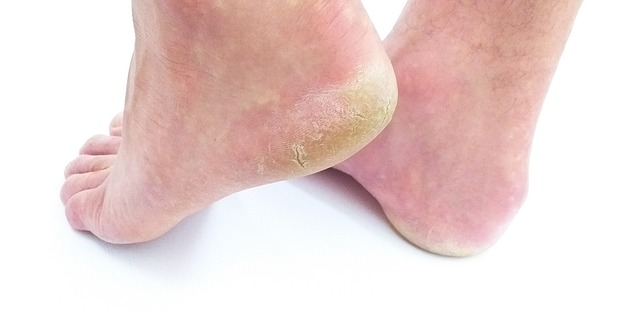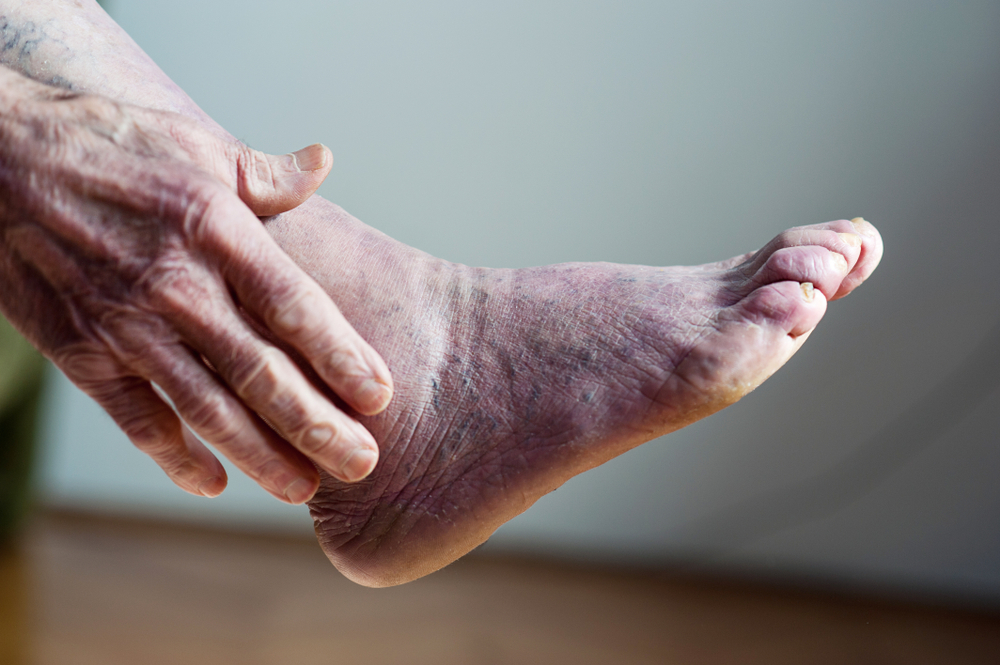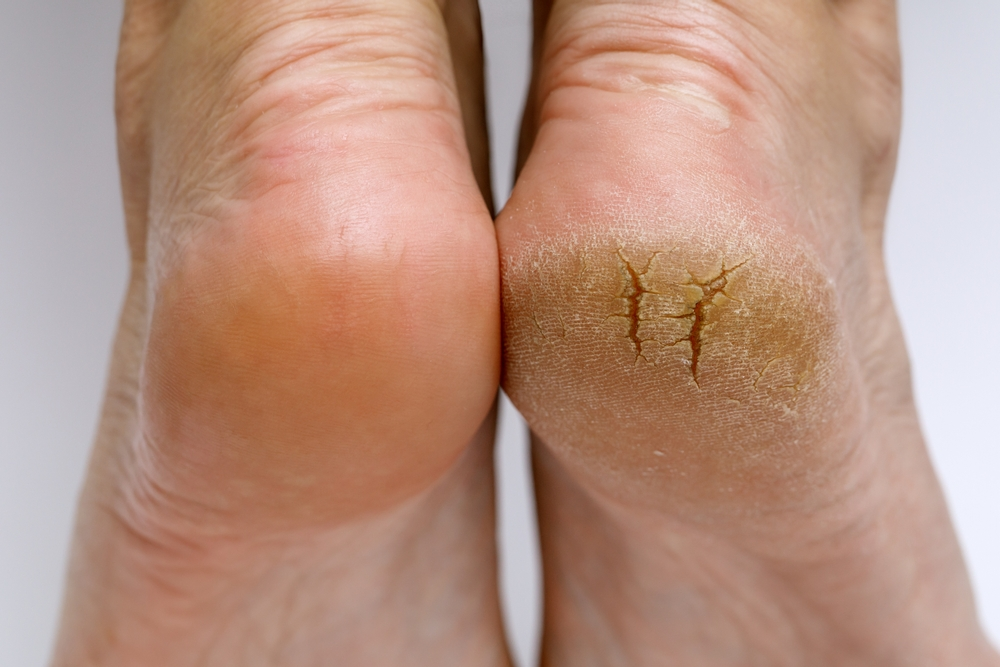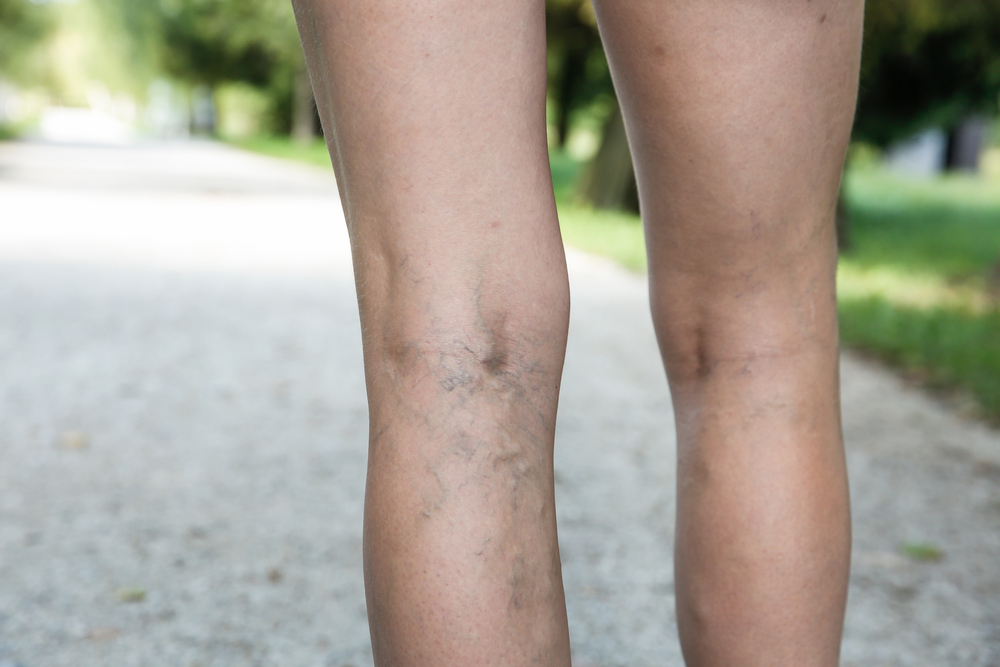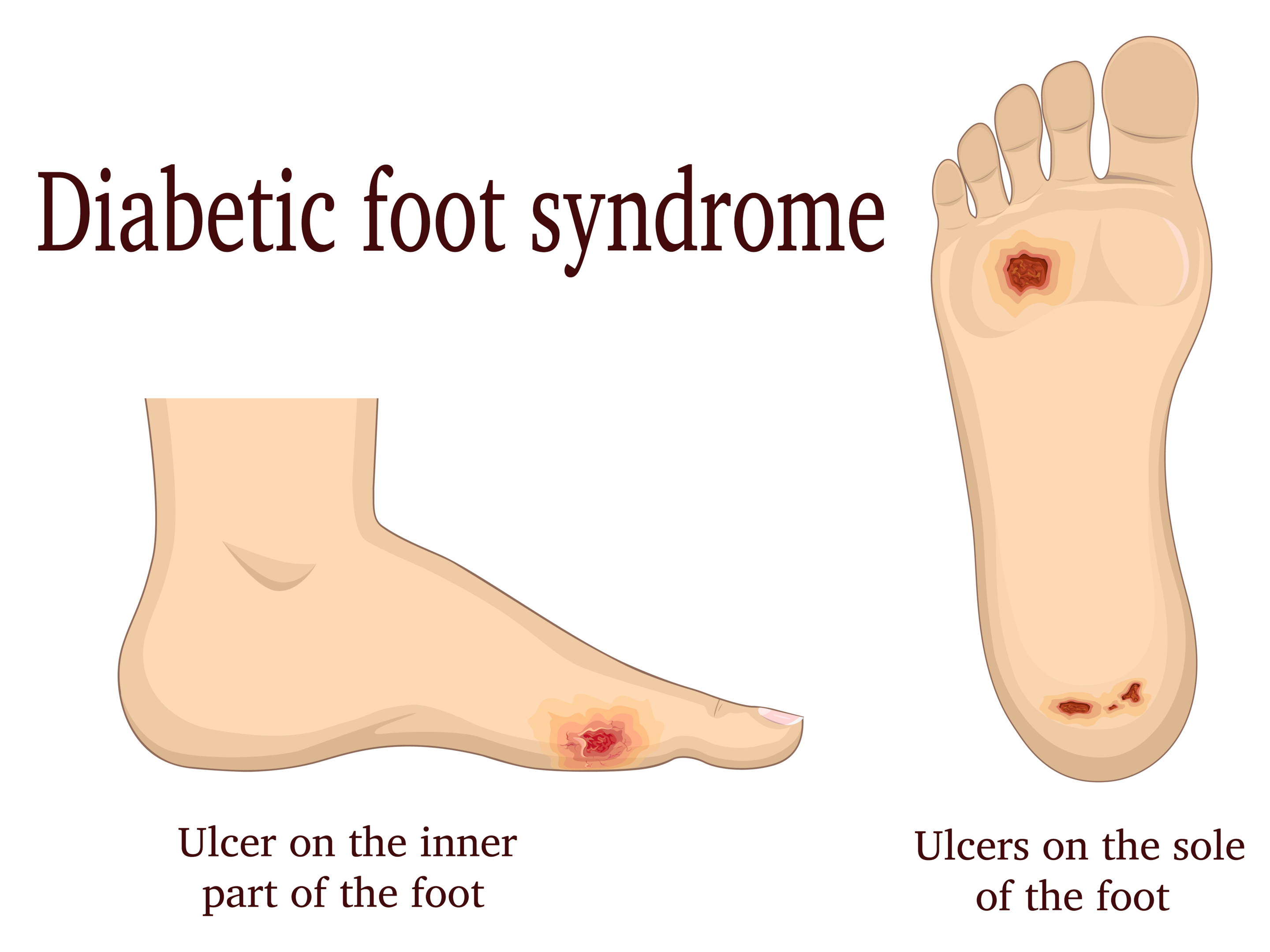Feet-Relief is supported by our audience. When you purchase through one of our links, we may earn a small affiliate commission. As an Amazon Associate I earn from qualifying purchases.Your cost is not affected.
Understanding the Impact: How Diabetes Affects Foot Temperature
Why are my feet always cold? Did you know that diabetes affects your foot temperature? One of the most common foot problems in people with diabetes is cold feet. In fact, a study published in the journal Diabetes Care found that nearly half of people with diabetes reported having cold feet.
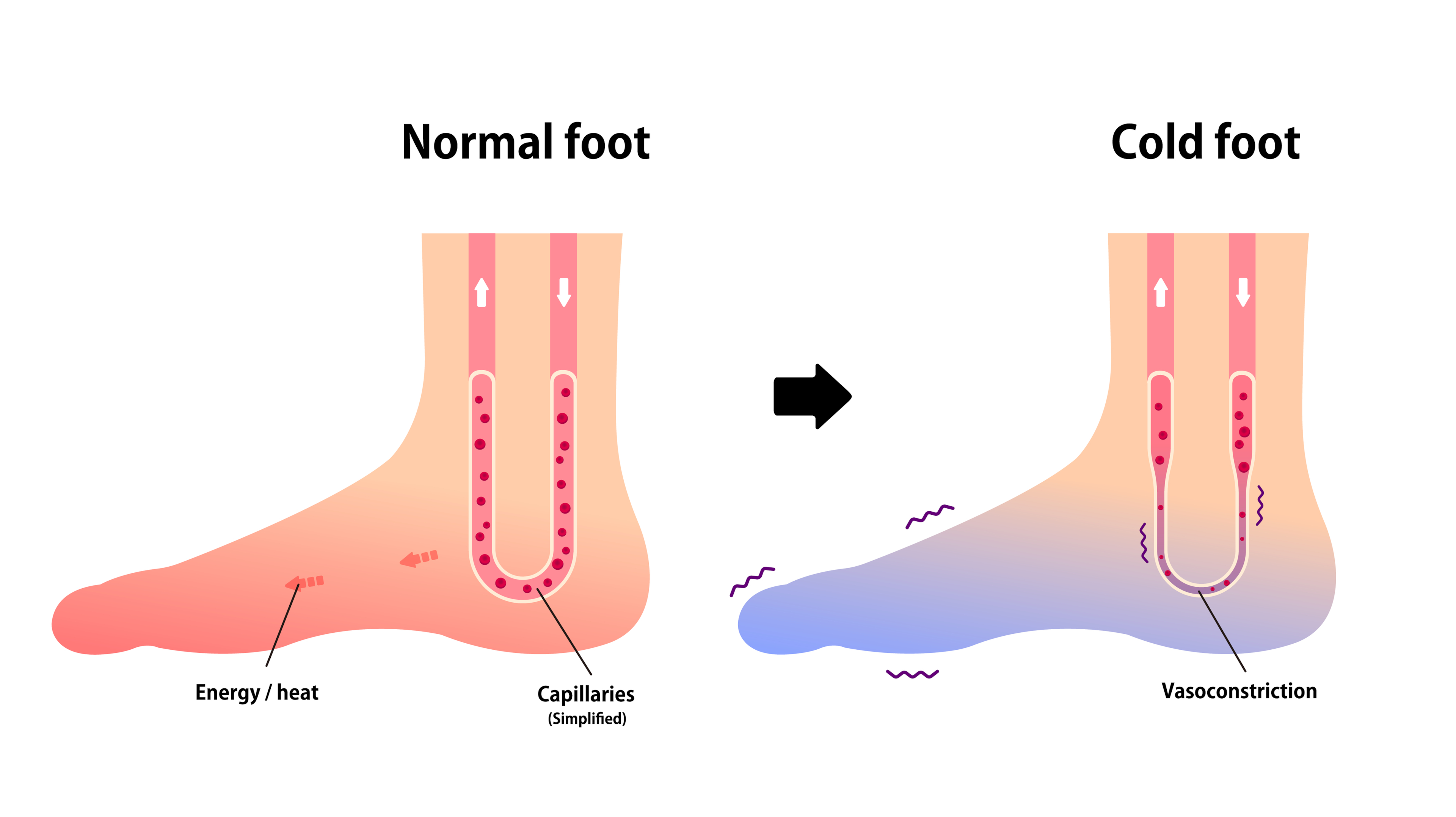
Image Source: FreeImages
Connection between Diabetes and Foot Health
Diabetes is a metabolic disorder that affects millions of people worldwide. It’s known for its characteristic high blood sugar levels, but its impact extends far beyond that. One of the lesser-known effects of diabetes is its impact on foot health, specifically, how diabetes affects foot temperature.
Understanding that the feet are critical to the body’s overall health and well-being is important. They carry the entire body’s weight, facilitate movement, and act as shock absorbers. As such, any changes to foot health could significantly affect a person’s quality of life. In the case of diabetes, these changes could range from minor discomfort to severe complications, such as foot ulcers or even amputation.
Poor circulation problems
The relationship between diabetes and foot health is complex, involving several factors, including blood circulation, nerve function, and immune response. Understanding these factors is key to grasping the full scope of how diabetes affects foot temperature and why it’s a cause for concern.
Understanding How Diabetes Affects Foot Temperature
The primary mechanism through which diabetes affects foot temperature is through its impact on blood circulation and nerve function. High blood sugar levels, which are characteristic of diabetes, can cause damage to the nerves and blood vessels in the feet. This damage, known as peripheral neuropathy, can lead to a variety of symptoms, including changes in foot temperature.
Diabetic nerve damage
The nerves in the feet are responsible for sensing temperature changes and sending these signals to the brain. When the nerves are damaged, they may not be able to accurately relay these temperature changes, resulting in a sensation of cold feet. Likewise, damaged blood vessels may not be able to properly regulate blood flow to the feet, leading to temperature changes.
In addition to affecting foot temperature, peripheral neuropathy can cause numbness, tingling, and pain in the feet. These symptoms can make it difficult for individuals with diabetes to notice changes in foot temperature, leading to further complications.
Exploring the Connection: Cold Feet and Diabetes
The connection between cold feet and diabetes is a crucial one to understand. Cold feet are not just a minor inconvenience. They can be a sign of serious underlying health issues related to diabetes.
Diabetic neuropathy
Peripheral neuropathy, as mentioned earlier, can cause cold feet in individuals with diabetes. The damaged nerves and blood vessels can’t properly relay temperature information or regulate blood flow, leading to cold feet. But the question remains: why exactly do diabetics get cold feet?
Symptoms and Risks of Cold Feet in Diabetics
Other symptoms often accompany cold feet in diabetics. These include numbness, tingling, or pain in the feet. In some cases, the skin on the feet may also become dry and cracked due to the reduced blood flow. These symptoms are all signs of peripheral neuropathy.
The risks associated with cold feet in diabetics are significant. The lack of sensation in the feet can make it difficult for individuals to notice injuries or infections. This, combined with the impaired immune response often seen in individuals with diabetes, can lead to serious complications, such as foot ulcers or even amputation.
Furthermore, chronic cold feet can negatively impact a person’s quality of life. It can cause discomfort, disrupt sleep, and lead to difficulties in performing daily activities.
Why Do Diabetics Get Cold Feet? Science Explains How Diabetes Affects Foot Temperature
The science behind why diabetics get cold feet is a complex one, involving several factors. High blood sugar levels in individuals with diabetes can damage the nerves and blood vessels in the feet, a condition known as peripheral neuropathy. This nerve damage impairs the body’s ability to sense and regulate temperature, leading to feelings of coldness in the feet.
Decreased blood flow
Additionally, the impaired blood circulation in individuals with diabetes can further exacerbate this issue. Reduced blood flow to the feet can lead to decreased foot temperature, contributing to the sensation of cold feet.
The Impact of Diabetes on Foot Temperature Regulation
Diabetes can significantly impact the body’s ability to regulate foot temperature. The nerve damage and impaired blood circulation caused by high blood sugar levels can interfere with the body’s normal temperature regulation mechanisms, leading to changes in foot temperature.
Lowered immunity
In addition, the immune response in individuals with diabetes is often weakened, which can further contribute to changes in foot temperature. A weakened immune response can lead to increased susceptibility to infections, which can cause inflammation and increase foot temperature.
Poor circulation leads to other issues, too
When your feet feel cold, it indicates poor blood flow throughout. It’s important to understand the symptoms of poor circulation.
Poor blood circulation can lead to serious foot complications. According to a source, people with poor circulation or peripheral artery disease may not have any symptoms or mild pain or “burning” in the feet. The pain may occur with walking or exercise and decrease with rest.
Cracked skin as one of the symptoms of poor circulation
Poor blood circulation caused by diabetes can lead to cracked skin on the feet. According to a source, people living with diabetes have poor circulation in their feet and may have dysfunctions in their nervous system.
These conditions can cause dry skin and cracks that are slow to heal. Sometimes, fissures on the soles of the feet can develop into painful ulcers, which can make it challenging for people to stand or walk.
Other foot problems
Other symptoms of poor circulation include numbness and tingling in the hands and feet, cold hands and feet, swelling in the lower extremities, cognitive dysfunction, digestive problems, fatigue, joint pain and muscle cramping, and skin color changes.
Poor circulation can also cause ulcers in the legs and feet when the body’s ability to heal is affected 12. Taking care of your skin if you have poor circulation is important, as it can lead to serious complications such as varicose veins, kidney damage, and strokes.
Cold Toes and Diabetes: A Deeper Look at how diabetes affects foot temperature
Cold toes are a common symptom in individuals with diabetes and can be a sign of peripheral neuropathy. As with cold feet, cold toes are caused by nerve damage and impaired blood circulation, which result in decreased sensation and temperature regulation in the toes.
Cold feet and toes make walking less safe
Cold toes can be particularly concerning as they can make it difficult for individuals to walk or balance properly. Additionally, the decreased sensation can make it difficult for individuals to notice injuries or infections, which can lead to serious complications.
Keep moving
In fact, keeping your feet warm helps ensure improve blood flow to your feet and toes. Wear thick socks and wear shoes to avoid experience cold feet. Walking and other forms of aerobic exercise help improve circulation, too. People with diabetes benefit from a regular exercise schedule.
Can Diabetes Cause Cold Feet: Medical Studies and Findings
Numerous medical studies have confirmed that diabetes can indeed cause cold feet. These studies have shown that high blood sugar levels can lead to peripheral neuropathy and impaired blood circulation, both of which can result in cold feet.
Additionally, these studies have demonstrated that cold feet are a common symptom in individuals with diabetes, affecting up to half of all individuals with the condition.
Managing Cold Feet in Diabetes: Strategies and Tips
Managing cold feet in diabetes involves addressing the underlying causes and managing the symptoms. This can involve a combination of medical treatment, lifestyle changes, and home remedies.
Medical treatment for cold feet in diabetes typically involves managing blood sugar levels to prevent further nerve damage. This can involve medication, insulin therapy, or dietary changes. Physical therapy or nerve stimulation may also be recommended to improve blood circulation and nerve function.
Lifestyle changes can also be beneficial in managing cold feet in diabetes. This can include regular exercise to improve blood circulation, wearing warm socks to help maintain foot temperature, and good foot hygiene to prevent infections.
Is Cold Feet a Sign of Diabetes: Early Detection and Prevention
Cold feet can indeed be a sign of diabetes, particularly in individuals with other symptoms, such as frequent urination, excessive thirst, or unexplained weight loss. If you’re experiencing cold feet and these other symptoms, seeking medical attention as soon as possible is important.
Early detection and management of diabetes can help prevent complications, including cold feet. This can involve regular check-ups, monitoring blood sugar, and lifestyle changes, such as a healthy diet and exercise.
Increase blood circulation to your feet
Here are some tips to help increase blood circulation to the feet:
- Exercise: Walking, cycling, swimming, and other low-impact exercises can help improve blood flow to the feet.
- Elevate your feet: Elevating your feet above your heart level can help reduce swelling and improve blood flow.
- Quit smoking: Smoking can cause blood vessels to narrow, which can lead to poor circulation.
- Wear comfortable shoes: Tight shoes or high heels can restrict blood flow to the feet. Opt for comfortable shoes that fit well and provide adequate support.
- Stay hydrated: Drinking plenty of water can help improve blood circulation throughout the body, including the feet.
- Maintain a healthy weight: Being overweight or obese can put extra pressure on your feet and legs, which can lead to poor circulation.
- Manage underlying health conditions: If you have underlying health conditions such as diabetes or high blood pressure, it’s important to manage them effectively as they can affect blood circulation in the feet.
Please note that these tips are not exhaustive, and it’s important to consult with a healthcare professional if you have concerns about your foot health.
Why Does Diabetes Cause Cold Feet: Unveiling the Truth
The truth behind why diabetes causes cold feet lies in the damage caused by high blood sugar levels. This damage, known as peripheral neuropathy, affects the nerves and blood vessels in the feet, impairing the body’s ability to sense and regulate temperature. This, combined with the impaired blood circulation often seen in individuals with diabetes, leads to the sensation of cold feet.
Keep your blood flowing
Understanding how diabetes affects foot temperature is crucial for individuals with the condition. Cold feet are not just a minor inconvenience. They can be a sign of serious underlying health issues and can lead to significant complications if not properly managed.
If you’re experiencing cold feet and you have diabetes, it’s important to seek medical attention. With proper management, it’s possible to manage the symptoms and prevent further complications. Remember, your feet are a vital part of your overall health and well-being, and they deserve your care and attention.
Amazon and the Amazon logo are trademarks of Amazon.com, Inc, or its affiliates.


